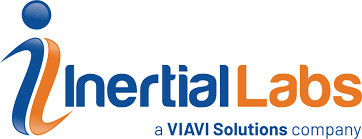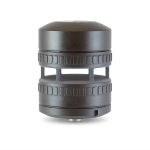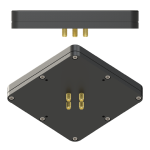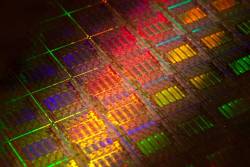Strategic move brings enhanced resiliency and expanded global reach to VIAVI’s positioning, navigation, and timing solutions.
In a rapidly evolving landscape where precise navigation and resilient timing are critical across defense, aerospace, and commercial markets, VIAVI Solutions has taken another bold step forward. With its acquisition of Inertial Labs in 2025, VIAVI is significantly expanding its capabilities in the positioning, navigation, and timing (PNT) sector—adding powerful inertial measurement and navigation technologies to an already growing portfolio. The move strengthens VIAVI’s offering in assured PNT, enabling the delivery of robust, integrated solutions capable of operating even in GPS-denied environments.
This marks VIAVI’s second major PNT acquisition, following its 2022 purchase of Jackson Labs Technologies. That acquisition brought key technologies such as front-end GNSS receivers, transcoders, and retrofit solutions—along with a strong military customer base—into the VIAVI ecosystem. The strategy was clear: build a resilient, modular, and future-ready PNT platform to serve emerging needs in defense and commercial autonomy.
“After acquiring Jackson Labs, we quickly realized there was a strong opportunity to enhance the resiliency of our PNT solutions by adding inertial capabilities,” said Doug Russell, VIAVI’s Senior Vice President and General Manager, Aerospace & Defense. “We began evaluating potential partners in the inertial space and found an ideal match in Inertial Labs.”
A Strategic Match
The relationship between VIAVI and Inertial Labs began with a technical collaboration—integrating VIAVI’s PNT receiver with Inertial Labs’ inertial navigation system (INS). The success of that integration ultimately led to the full acquisition, creating what Russell describes as a “great combination” that opens doors in new markets, especially within aerospace and defense.
The acquisition also brings geographical advantages. Inertial Labs has a strong European footprint, complementing VIAVI’s established North American presence. “We can now offer current and prospective customers a broader, more integrated solution set,” Russell said. “The synergy between our two companies allows us to meet customer needs more comprehensively, from hardware to software to integration.”
From Inertial Labs’ perspective, the acquisition represents a major growth opportunity. “Being part of VIAVI, a public company with a deep presence in North America, gives us added credibility and reach—especially with major U.S. defense primes,” said Jamie Marraccini, President and CEO of Inertial Labs. “These primes are defining the next generation of aerial systems, and they need trusted IMU and INS providers.”
The First Integration: A Turnkey APNT Solution
Inertial Labs is well-known for developing IMUs used in stabilization systems such as weapon stations and gimbaled cameras. About a year ago, the company began exploring the alternative PNT (APNT) space—adding computer vision and other sensors to augment traditional navigation systems.
The first integrated product with VIAVI combines a multi-source PNT receiver, a precision clock from Jackson Labs, and an INS from Inertial Labs. The solution is designed to be plug-and-play: users simply replace the antenna connection and insert the new unit, which outputs GPS L1 signals for compatibility with existing systems—no teardown required.
“This setup adds much-needed resiliency,” Marraccini said. “When GNSS is denied, the INS continues to provide reliable position, orientation, and velocity updates, which are then processed through the transcoder to maintain GPS L1 output.”
The INS fuses multiple data streams—including GNSS, LEO satellite signals, and clock timing—using advanced algorithms. This sensor fusion enables robust positioning in challenging environments. “It’s a natural fit and meets a very real market demand,” Marraccini said. “The interest has been immediate.”
Prototypes are already being tested, particularly on land vehicles, with early data showing strong performance. “You’re getting a high-end INS at a price point that opens up new markets,” Marraccini said. “Now, even lower-cost vehicles can benefit from a precision navigation system.”
Looking Ahead: Expanding the Ecosystem
The collaboration between VIAVI and Inertial Labs is just getting started. In addition to building integrated solutions, both companies are committed to expanding their standalone technologies. For Inertial Labs, that means developing next-generation IMUs—including fiber-optic gyro-based systems—and designing an open INS platform capable of ingesting any aiding data, from visual odometry to time-of-flight sensors.
“We’re working with partners across visual positioning, RF signals of opportunity, and other alternative navigation technologies,” Marraccini said. “On the VIAVI side, we’re also advancing antenna design and synchronization technologies to pair with these resilient solutions.”
This open, modular strategy is especially relevant for commercial markets. “Redundancy is just as critical in commercial autonomy,” Marraccini said.
“Whether it’s unmanned delivery vehicles, drones, industrial machinery, or precision agriculture, all these applications demand assured navigation even when GNSS is unavailable.”
Sensor Fusion for a Resilient Future
With the combined strengths of Jackson Labs and Inertial Labs, VIAVI now has the sensor fusion expertise and product depth to lead the charge in resilient PNT. The first integrated solution is already in customer hands—but it’s only the beginning.
“From here, we’ll continue building on sensor integration, layering in more inputs, and developing new product innovations,” Russell said. “We’re also extending these capabilities into timing and synchronization—areas where VIAVI has deep heritage.”
The strategy is clear: scalable innovation, market-focused integration, and resilient solutions for an increasingly contested navigation environment.
“It’s an extremely exciting time for us,” Russell said. “There are very few companies with the breadth and depth to do what we’re doing. And we’re just getting started.”






